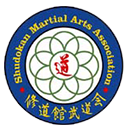Techniques taught improperly to children (and adults) will remain with them for years. These incorrect techniques must later be unlearned, a painful, indeed sometimes impossible, task. Teachers must not burden children with poor technique that they must unlearn later. Arguably, it might be better not to teach them at all until they are older. Teaching the technique correctly the first time avoids needless waste of precious training time later. (The old adage “practice makes perfect” is, in our opinion, very misleading. Practice makes permanent! Poor technique practiced continuously makes poor technique permanent—not a good idea.)
Step-by-step (component-by-component) progression of achievements as each new component is introduced and learned will motivate youngsters to continue, and help reduce or eliminate the fears of failure and embarrassment that often become self-fulfilling prophesies that can sometimes lead to children quitting karate-do altogether. This component-by-component gradual approach can help alleviate these problems. But this step-by-step process is aided by also using obstacles to force correct movement.
Explore More about Karate-Do at a Traditional Karate Association
Are you looking for a karate association that promotes traditional Japanese martial arts? If so, SMAA is for you!
Members of SMAA bridge the gap between western and Asian martial arts, keeping the traditional spirit and practice of budo alive in the west. If you have an interest in aikido, iaido, judo, jujutsu, or karate-do, call (734) 720-0330 or submit a contact form to learn more about becoming a member!
















